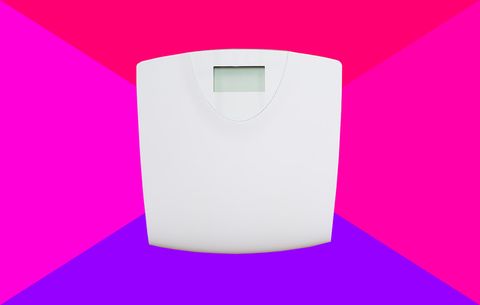Eating a low-carb diet means cutting down on the amount of carbohydrates (carbs) you eat to less than 130g a day. But low-carb eating shouldn't be no-carb eating.
Some carbohydrate foods contain essential vitamins, minerals and fibre, which form an important part of a healthy diet.
Here we'll explain what we mean by low-carb, what the benefits are of low-carb eating when you have diabetes, and share a low-carb meal plan to help you get started if this is the diet for you. We'll also explain how to get support to manage any potential risks, especially if you manage your diabetes with medications which put you at risk of hypos.
If you or someone you know is self-isolating, find out how to eat healthily whilst staying at home.
What's a low-carb diet?
But how low is low-carb? There are different types of low-carb diets. Generally, low-carb eating is when you reduce the total amount of carbs you consume in a day to less than 130g.
To put this into context, a medium-sized slice of bread is about 15 to 20g of carbs, which is about the same as a regular apple. On the other hand, a large jacket potato could have as much as 90g of carbs, as does one litre of orange juice.
A low-carb diet isn't for everyone. The evidence shows they can be safe and effective in helping people with type 2 diabetes manage their weight, blood glucose (sugar) levels and risk of heart disease in the short term.
But the evidence also shows they can affect growth in children, and so should not be recommended for them. And there is little evidence to show the benefits of this type of diet in people with type 1.
If you do decide to follow a low-carb diet, it's important to know all the potential benefits and how to manage any potential risks.
Low-carb meal plan
Our low-carb meal plan aims to help you maintain a healthy balance while reducing the amount of carbs you eat. Varying amounts of carbohydrate are shown each day to help you choose which works best for you.
It's nutritionally balanced, we've counted the calories for you, and it contains at least five portions of fruit and veg per day.
We've included the values of fibre and protein too to help you make sure you are meeting your nutritional requirements. We know lots of people in the UK aren't eating enough fibre, so it's important to try and include good sources in your diet every day.
Please note that the nutritional information and exact specifications for all meals and snacks is available in the linked recipes and the low carb meal plan (PDF 84KB).

Before you begin this meal plan
Before starting any healthy eating programme, please read how to choose your meal plan to make sure you follow the plan that's right for you.
Please speak to your diabetes health care team before making significant changes to your diet.
This is especially important if you treat your condition with insulin and diabetes medications that increase the risk of hypos (low blood sugar levels). Reducing your carbohydrate intake and changes to your body weight may mean your insulin and diabetes medication needs to be adjusted.
Important points about this meal plan
- This meal plan has taken nutritional information from our recipes and the sixth edition of Carbs and Cals, unless otherwise stated.
- A mix of whole milk and semi-skimmed milk has been used, but please use whichever you prefer. Any dairy alternative should be unsweetened and fortified with calcium.
- These meal plans meet your recommended amount of fibre across the week.
- This meal plan outlines daily food intake for one person, but it's still important to remember to drink regular fluids. This includes plain water, plain milk, and tea or coffee without added sugar.
Disclaimer: every effort has been taken to make these meal plans as accurate as possible, but there will be some variation in nutritional values. Speak to a dietitian or your diabetes healthcare team if you have questions about your individual dietary needs.
Monday
Breakfast: Baked eggs with two slices of rye bread
Lunch: Chilli bean soup with avocado salsa
Dinner: Mackerel tomatoes served with leeks and broccoli
Pudding: Apple strudel
Snacks: Greek yogurt, two satsumas, plain almonds, one apple
Milk: 225ml semi-skimmed milk
Tuesday
Breakfast: Porridge made with 30g porridge oats, 200ml almond milk, 40g blueberries and 10g pumpkin seeds
Lunch: Bang bang chicken salad
Dinner: Minced beef and vegetable filo pie
Pudding: 80g strawberries
Snacks: Avocado, brazil nuts, celery and peanut butter
Milk: 225ml semi-skimmed milk
Wednesday
Breakfast: Mushroom and spring onion omelette
Lunch: Butterbean paté with carrots, tomatoes and mini wholemeal pitta bread
Dinner: Aubergine and courgette parmesan bake with rocket, tomato and tinned kidney beans
Pudding: 80g melon
Snacks: One apple and peanut butter, one pear with almonds, natural yogurt and pumpkin seeds
Milk: 225ml semi-skimmed milk
Thursday
Breakfast: Summerberry smoothie
Lunch: Chickpea and tuna salad
Dinner: Chicken tikka masala and cauliflower pilaf
Pudding: Summer berry posset
Snacks: Greek yogurt, two satsumas, one orange, almonds, two oatcakes topped with smooth peanut butter
Milk: 225ml semi-skimmed milk
Friday
Breakfast: Baked eggs with two slices of rye bread
Lunch: Two slices of medium wholemeal bread with grated cheddar, vegetable oil-based spread, tomato and cucumber
Dinner: Grilled salmon steak with baked sweet potato, broccoli and cabbage
Pudding: Sugar-free jelly
Snacks: raspberries, melon, avocado, plain almonds
Milk: 225ml semi-skimmed milk
Saturday
Breakfast: Welsh leek rarebit
Lunch: Cauliflower and leek soup with 25g cheddar
Dinner: Butternut squash and borlotti bean stew
Pudding: Tinned peaches in juice
Snacks: One apple, 30g almonds, Greek yogurt, small pear and almonds, 60g pistachios with shells
Milk: 225ml semi-skimmed milk
Sunday
Breakfast: Omelette made with two eggs and milk along with 80g spinach, 80g mushrooms, 1tsp of vegetable oil, 25g grated cheddar. Pair with a slice of rye bread with 1tsp of unsaturated margarine
Lunch: Smoked mackerel on granary toast with 1sp of veg spread, rocket, tomato and cucumber.
Dinner: Greek homestyle chicken with broccoli and leeks
Pudding: 80g raspberries and 80g melon
Snacks: Low-fat Greek yogurt with almonds and pumpkin seeds, spicy roasted chickpeas, one small pear
Milk: 225ml semi-skimmed milk
Benefits of following a low-carb diet
One of the main benefits of following a low-carb diet is weight loss. For people with type 2 diabetes, this helps to reduce HbA1c and blood fats such as triglycerides and cholesterol. For people who don't have diabetes, losing weight can reduce your risk of developing type 2 diabetes, and a low-carb diet is one option to help you do this.
For people with type 1 diabetes
If you have type 1, the strongest evidence suggests that carb counting is the best way to manage your blood sugar levels. This means matching how much insulin you take to the amount of carbs in your meal, snack or drink.
There is no strong evidence that following a low-carb diet is safe or beneficial, which is why we don't recommend this diet for people with type 1 diabetes.
It is really important that you speak to your healthcare team for support to manage your insulin if you're considering a low-carb diet.
For people with type 2 diabetes
We know losing 15kg within three to five months will give people with type 2 the best chance of putting their diabetes into remission. Evidence tells us this is more likely if you are able to lose weight within 6 years of your diagnosis.
Finding a way to lose weight can also help you improve the way you manage your condition and reduce your risk of diabetes complications. There are different ways to lose weight, such as a low-carb diet - but there's no one-size-fits-all approach.
Find out more about weight loss and diabetes.
"I changed to a high-fat, low-carb diet and cut out sweet stuff altogether. Diabetes UK's website and an app for my phone really helped.
I lost around 12lbs (5.5kg) in my first week. When I returned to see the nurse after three months, my HbA1c was down to 42mmol/mol – it had been 51mmol/mol when I was diagnosed. The nurse thought she was seeing things.
I've now lost around seven-and-a-half stone (46.8kg) and my HbA1c level is 37mmol/mol."
- Paul's type 2 diabetes is now in remission.
However, there's no evidence that following a low-carb diet is any more beneficial in managing diabetes than other approaches in the long term, including a healthy, balanced diet.
Research suggests that the best type of diet is one that you can maintain in the long term, so it's important to talk to your healthcare professional about what you think will work for you. Another option is the Mediterranean diet, which is also linked to reducing the risk of heart diseases and stroke.
What to consider before following a low-carb diet
If you treat your diabetes with insulin or any other diabetes medication that puts you at risk of hypos, following a low-carb diet may increase this risk. Speak to your healthcare team about this so they can help you adjust your medications to reduce your risk of hypos. Your team may also support you to check your blood sugar levels more often.
"I make sure I balance out my diet with what suits my insulin, but with a bit of tweaking, most things can be persuaded to suit my insulin!
I won't eat a load of pasta with a side of garlic bread and not much else, because the carb load would be difficult to bolus for. But neither would I eat a completely carb free meal. It's all a question of balance, and a healthy diet is good for all of us, diabetic or not."
- Online forum user living with type 1.
Depending on the approach, following a low-carb diet may also lead to other side effects, such as constipation or bad breath.
Although these can be unpleasant, they are usually temporary and shouldn't be harmful in the long term. Speak to your healthcare professional if you're concerned about any of these.
It's really important to first reduce your carb intake from unhealthy sources such as sugary drinks, pizzas, cakes, biscuits, chips, white bread, fruit juices and smoothies.
And it is a good idea to get your limited carbs from healthy high-fibre carb foods, such as pulses, nuts, vegetables, whole fruits and whole grains. You can help make sure you're getting the calcium you need by including unsweetened milk and yoghurt in your diet too.
Back to top



































